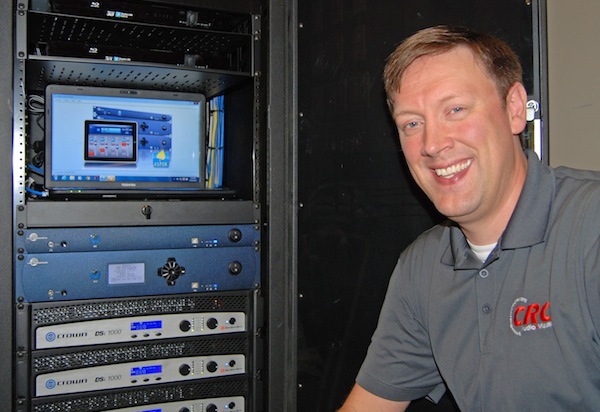Bainbridge Island Museum Relies on Lectrosonics ASPEN Processing

Follow us
Add us as a preferred source on Google
As an educational institution with a focus on contemporary art, Bainbridge Island Museum of Art’s mission is to engage a diverse population with the art and craft of the northwest region.
- What started as a project to fix some shortcomings with the AV system in the museum’s auditorium turned into a considerably larger project that, in the process, brought additional capabilities to the facility—thanks to ASPEN Series audio processing equipment from Rio Rancho, NM-based Lectrosonics.
- Seattle, WA-based CRC Technologies, an AV systems design / build firm with a focus on medical/dental facilities, houses of worship, live event venues, and meeting facilities, was initially contracted to make some enhancements to the existing AV system, at which point, the project took a decisive turn that enabled the museum to gain far greater capability from its investment.
- Jay Nichols, manager of the AV Division at CRC Technologies saw the system’s potential—if he could convince his client to invest in some additional equipment, which ultimately included a Lectrosonics SPNDNT Dante capable DSP mixer / processor and two DNTBOB 88 breakout boxes to augment the capabilities of the ASPEN SPN2412 24-input audio processor already in their possession. Nichols discussed the project.
- “I started off just fixing the initial install in the auditorium that was done by another company,” Nichols explained. “After the customer realized how good the equipment was that they already owned, I turned into a salesman and convinced them to expand the system—not cascade two systems together. I became the engineer when it came time to create schematic and line drawings to show the customer that the expansion would work and, finally, with the help of my installation crew, I became the installer and system programmer for the final commissioning of the new system.”
- According to Nichols, the Lectrosonics SPN2412 and SPNDNT are located in the Frank Buxton Auditorium equipment rack while the two DNTBOB 88 interfaces are located in the basement equipment rack. “The SPN2412—originally deployed by the original contractor—is used to mix microphones and line level sources from three stage floor boxes, wireless microphones, and preamp signals from the surround sound processor used for the auditorium. This system was expanded to add a museum-wide paging microphone for emergency announcements. Further, the SPNDNT is used to mix the audio from sources throughout the museum and disseminate them to any of the sixteen zones throughout the museum.”
- “The DNTBOB 88 breakout boxes are used to take the analog audio signal from the Crestron DM video switch and send it to the SPNDNT for mixing,” Nichols continued. “These two interface units also take the mixed signal from the SPNDNT and connect it to the 70-volt amplifiers used by the system.”
- Nichols discussed the capabilities of the Lectrosonics ASPEN Series equipment and the features that made these products ideal for this project. “The Aspen SPN2412 processor’s ability to mix the variety of signals required for the multipurpose auditorium without the need for someone to ‘run the soundboard’ was a huge factor in this project,” Nichols said. “By adding the combination of the SPNDNT Dante processor and the two DNTBOB 88 breakout boxes, we achieved the perfect solution to expand on the existing SPN2412 install and make the entire system seamless.”
- With a system of this size, questions inevitably arise. “Throughout the course of this project,” Nichols said, “I made several phone calls to Lectrosonics technical support group and, in every case, they were extremely helpful.”
- The Bainbridge Island Museum of Art’s AV system expansion was completed in June and since that time, Nichols reports that everything is working just as he envisioned, “The customer has been extremely happy with how robust and easy to use the system is and I am amazed at how well it worked from the moment I first turned it on. Most audio sources in the system take a 200-foot plus trip between a Crestron DM transmitter and the DM switch. From there, the signal enters the ASPEN system via the DNTBOB 88 breakout box and travels another 200 feet plus to the SPNDNT to be mixed and processed. It then makes the 200-feet plus return trip to the DNTBOB 88 boxes to be converted back to analog and sent to 70-volt amplifiers, after which it is sent to one of the sixteen zones. All of this travel and there is no discernible latency in the audio.”
scn Newsletter
A daily selection of the top stories for AV integrators, resellers and consultants. Sign up below.
TOPICS
The AVNetwork staff are storytellers focused on the professional audiovisual and technology industry. Their mission is to keep readers up-to-date on the latest AV/IT industry and product news, emerging trends, and inspiring installations.
MORE FROM SCN
